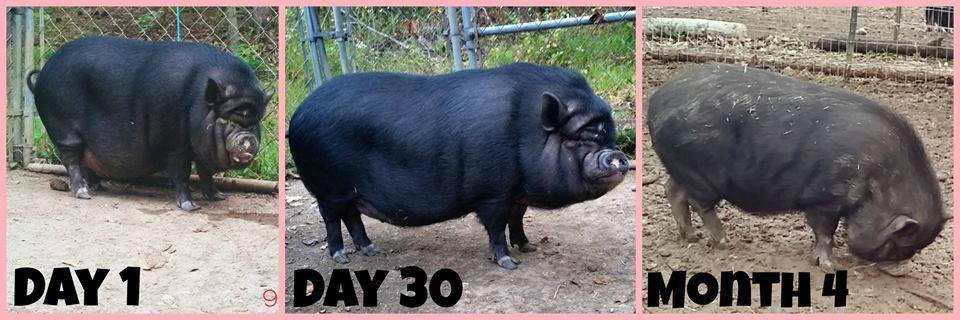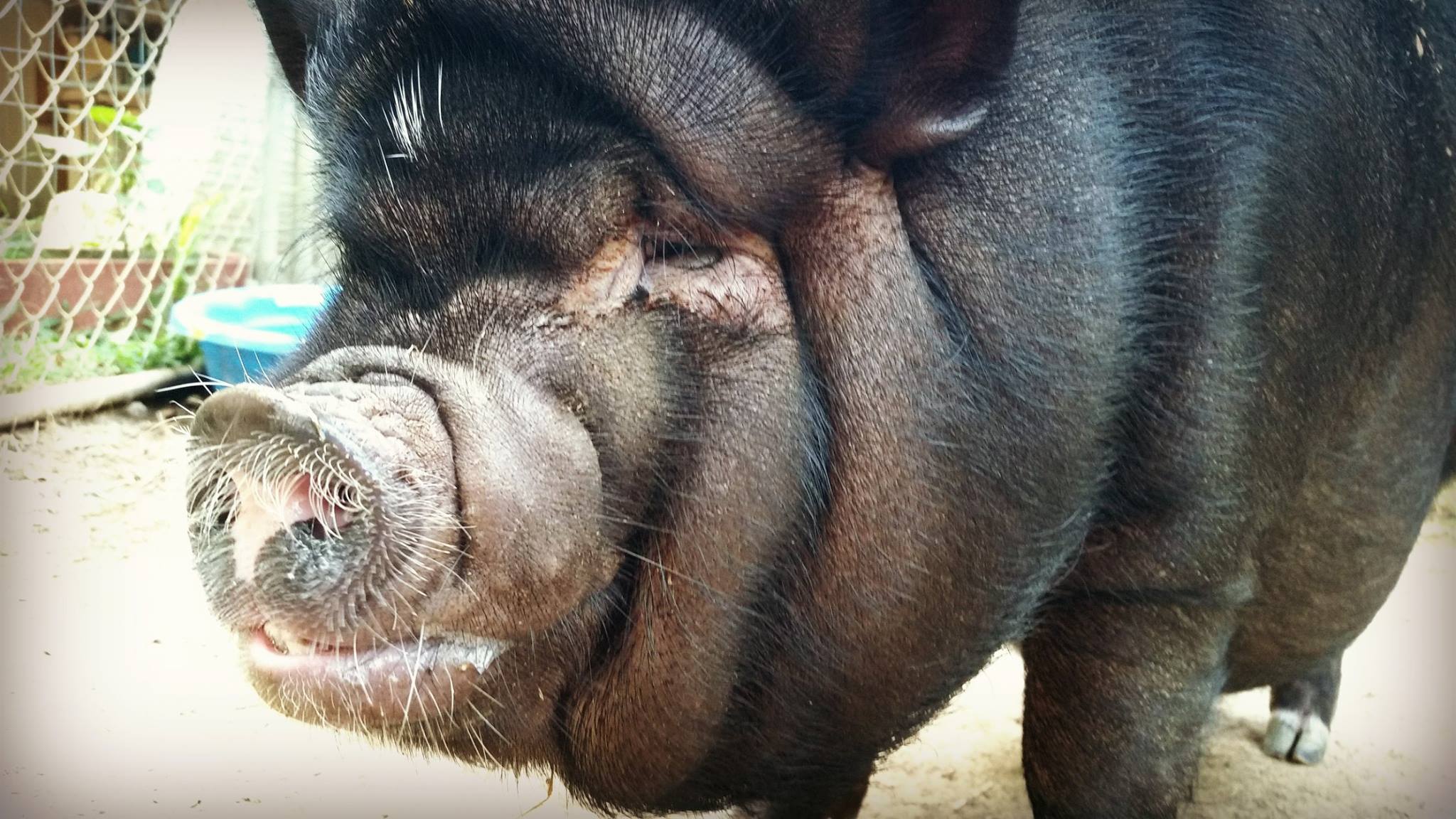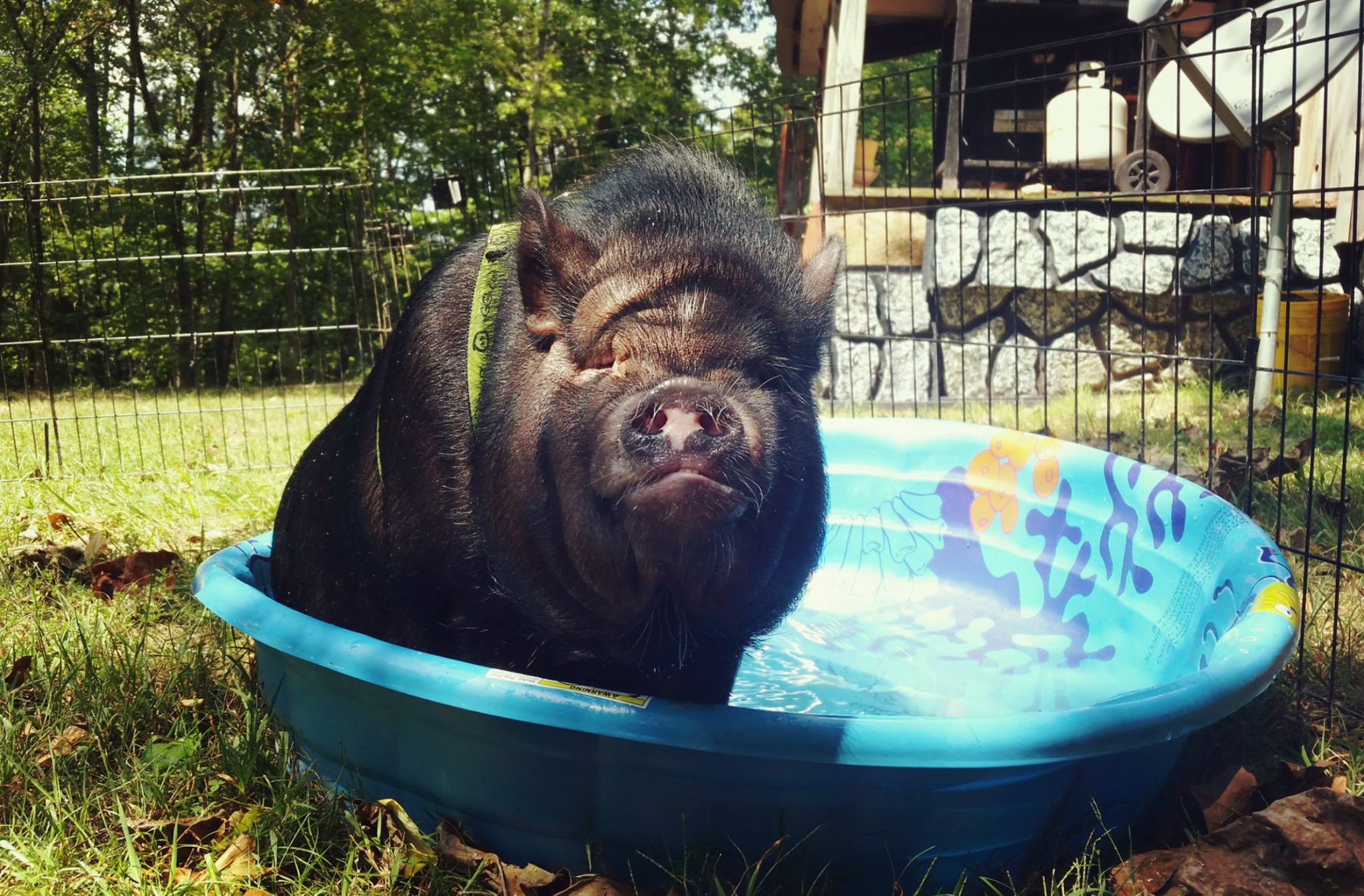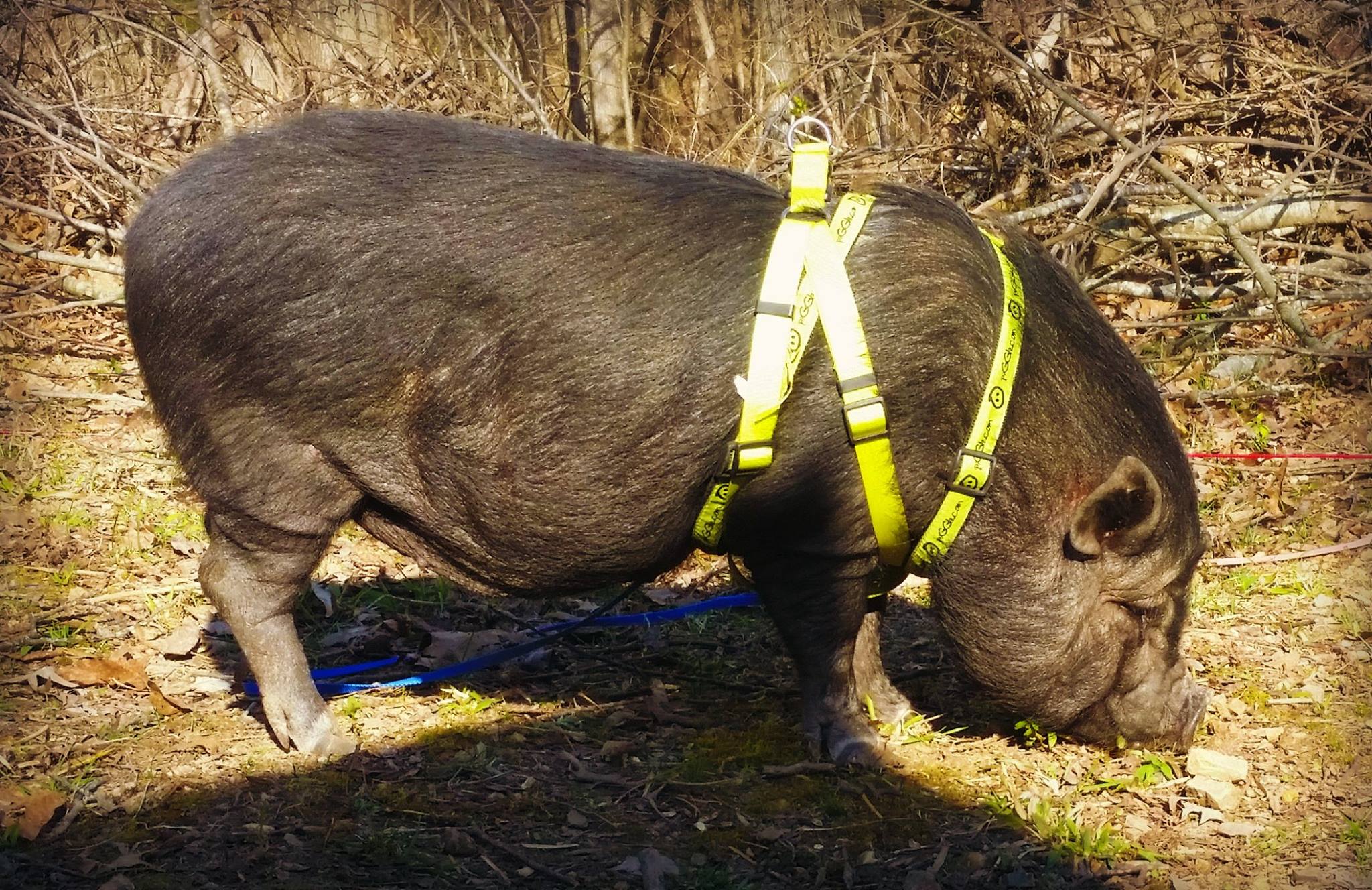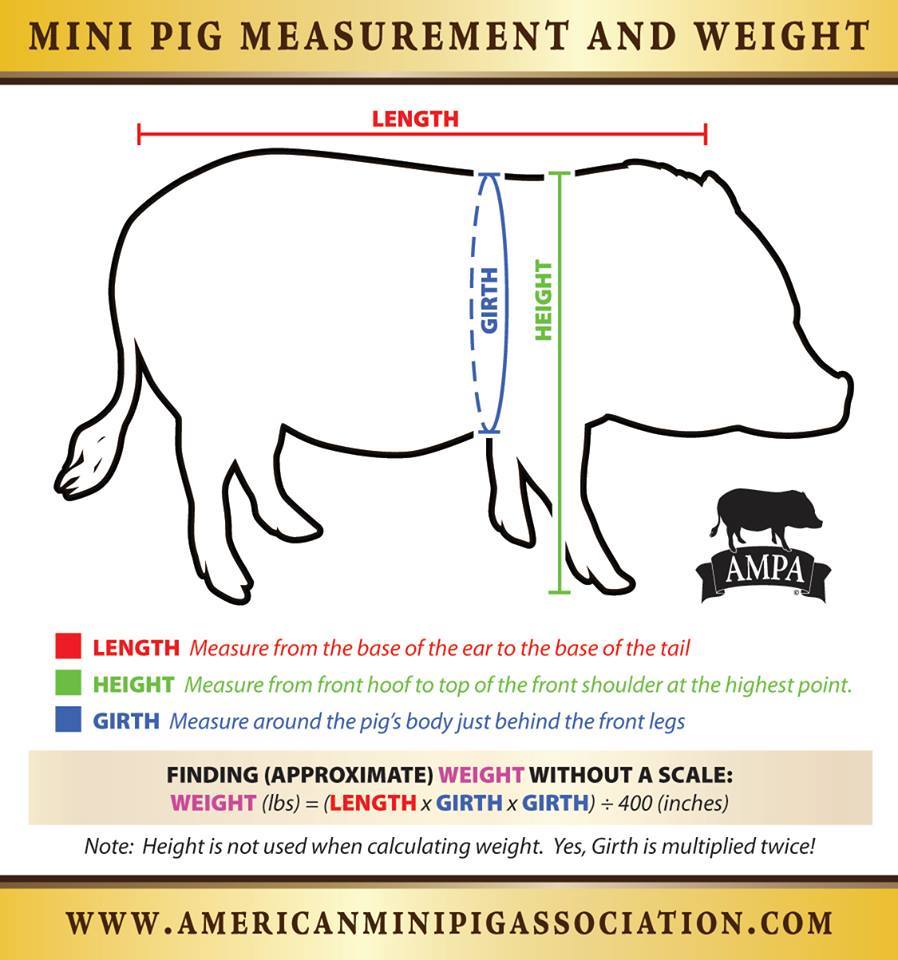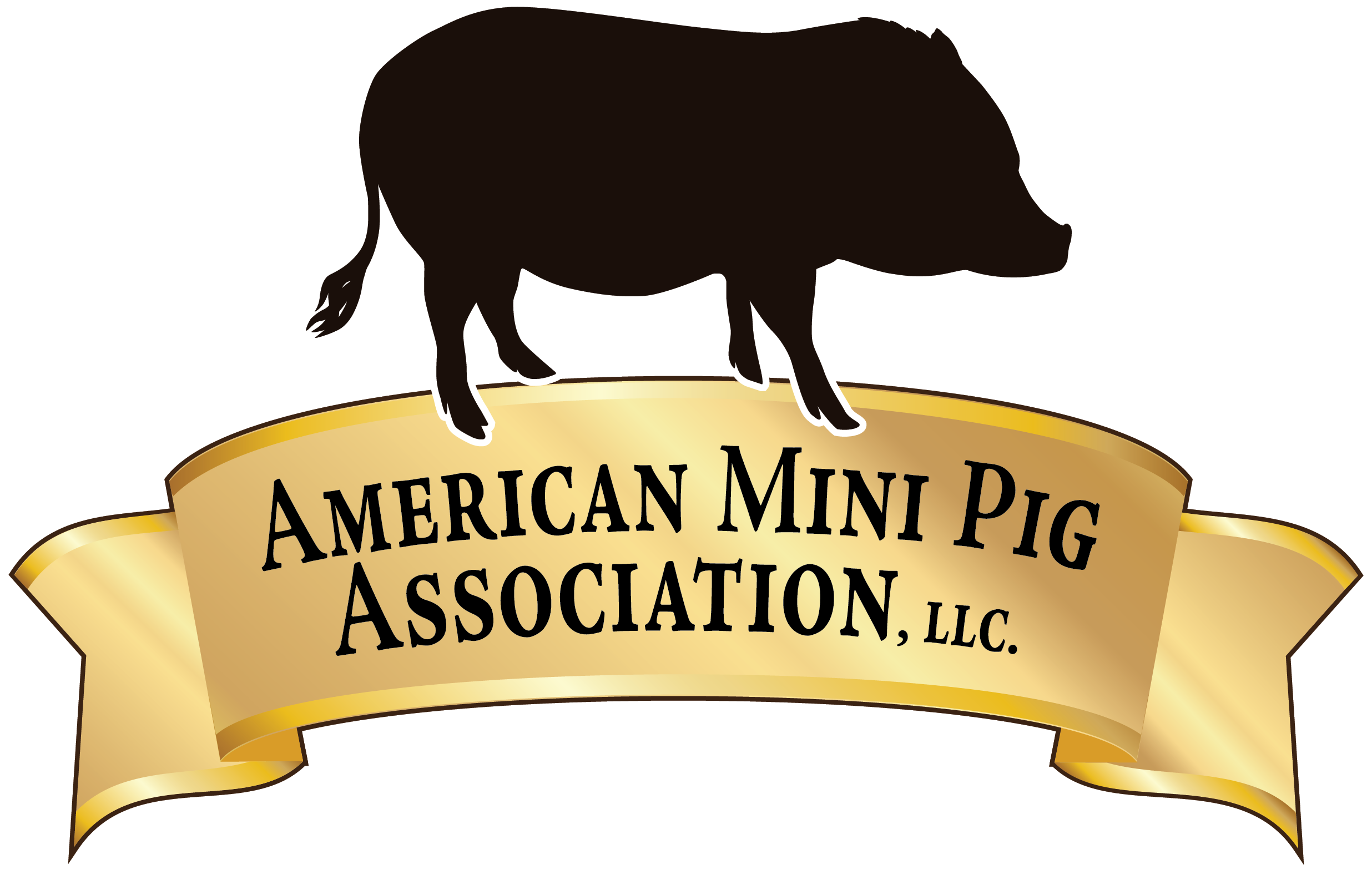Welcome to Fat Camp
Written By: Stacey Davenport of Pig Pen Hill Mini Pigs
Overfeeding is a common issue found among many pet pig owners. As mini pigs are prone to obesity, unhealthy weight gain is easily reached and we are seeing more and more overweight pigs every day. Obesity can lead to many health risks such as premature arthritis, diabetes, as well as heart and liver disease, just to name a few. Overweight pigs can develop a shorter life span, become depressed, aggressive, and simply have a lesser quality of life. Some cases are so severe it causes the pig to become totally debilitated by the extra weight, putting pressure on limbs and joints, in turn causing the inability to walk. Other health concerns include the loss of an already poor vision, and even hearing loss can occur from the effects of fat deposits in unnatural places. Fortunately, obesity is a treatable condition and we’re here to help!
The first step to weight loss, is realizing your pig is overweight and changes need to be made. Classic signs your pig is overweight include:
- Body score of a 4 and above– Inability to feel your pig’s hips and spine with firm pressure. You should never be able to visibly see them protruding but feel them by pressing the area slightly.
- Large jowls– This is common in young piglets, however after a few weeks of being home these chubby cheeks will slowly disappear as the piglet ages. In older pigs and piglets, chubby cheeks or jowls should be non-existent.
- Enlarged stomach touching or close to touching the ground– A pig’s stomach should be firm and closer to the body. Bellies that hang close or on the ground are at risk for cuts, scrapes, and potential infections. Large bellies also inhibit a pig’s ability to walk normally and cause spreading of the legs creating strain and pressure on muscles and joints.
- Folds or fat rolls developing on the brow or over eyes– Eyes should always be visible and never hidden. Eye color should always be easily seen. A pig’s head should be evenly smooth without ridges or folds.
- “Fat pads” located on the shoulders– This looks similar to a boar’s armor, making your pig look very broad or pudgy in the shoulders. This sometimes creates folds over the legs or shoulders creating pressure on the joints and decreases mobility.
- Folds or creases developing over the hind legs– This stage is usually paired with a very round appearance of the back and hips, and folds or dimpling at the base of the tail. Muscles are unseen as well as hip and back bones not able to be felt with firm pressure.
- Inability to stand, walk and lie down easily– This is often caused by pain of premature arthritis, and the pressure of carrying extra weight making it difficult to carry out normal mobility functions.
- Lowered or sagging perineal areas in males– This area should be taught against the stomach and should have no fat surrounding the penis sheath.
Now that you have determined that a diet is in order, where do you start?
First, you should be sure to feed your pig a proper diet. Your pig should be eating a mini pig pellet specifically made for mini pigs. There are a few popular brands available such as Manna Pro: Potbelly Pig Food, Purina Pig & Sow, and Mazuri. There is no one brand that is deemed better than the other as different people have a better satisfaction with one brand over another due to availability, size, and experience. If one specific brand isn’t working well with your pig, try a different brand until you find one that works best for you.
How much should your pig be eating?
In order for a pig’s nutritional balance to be met, he or she should be eating about 2% of its body weight, or goal weight a day, split into two feedings. This percentage includes all sources of food.
In order to know how much to feed your pig is dependent on two factors; how much does your pig weigh now, and how much should he weigh at a proper body score. In order to get your pig’s current weight without a scale, you will need a fabric measuring tape. If your pig is too large to use a fabric tape, you can improvise with a rope or string and a carpenter’s tape. Start by measuring your pig’s girth, by placing the string or tape behind your pig’s front legs and measuring her circumference. If you are using a string or different material other than a fabric tape, be sure to mark it and then measure it with the carpenter’s tape to decide how many inches you are working with.
Next, you want to measure your pig’s length. This is done by measuring the distance from the base of the pig’s ears to the base of their tail. To calculate your pig’s weight square his girth measurement by multiplying it to itself to obtain her girth result (example 42 inches’ x 42 inches’). Then, multiply the girth result by your pig’s length and then dividing by 400. This final number is your pig’s estimated current weight. Please be aware that this is not a 100% accurate weight as it may be a few pounds off. It is close enough to start your diet plan without the hassle of putting your pig on a proper scale.
Second, you will need to figure your pig’s target weight. This part is a bit tricky because as your pig begins to lose weight, fat layers will start to vanish and you will find your pig is shorter and smaller framed than you realized. There is also no “one size fits all” weight class that your pig should specifically fit into, but rather an ideal scoring on the body score chart. As every overweight pig has a unique diet goal, it is recommended to start with a goal of 10 pounds less than your pig’s starting weight and decreasing your goal by 10 pounds every 2-3 weeks until your reach a body score of 3. This time frame allows your pig’s body to properly adjust to the new portions without being extreme.
Figuring the amount your pig should eat can be calculated by multiplying your pigs target weight by .02 (2% of body weight). The resulting number is how many TOTAL pounds of food your pig should be eating per day. Note that each half pound equals one MEASURING CUP of food. Once you have a total of how many cups of food your pig needs on a daily basis, this should be spilt into two feedings. Half in the morning and half in the evening. It is recommended to cut all food except pig pellets, training treats and rewards. If your pig is accustomed to lots of treats, veggies, oatmeal, fruits, etc. throughout the day this may feel a bit harsh, but all of these extras attribute to your pigs’ overall weight. Treating your pig during training sessions or rewarding for good behavior is great, however, it must be done in moderation and not used as an extra meal between feedings. Remember that each time your goal weight is decreased, the feeding portion should be recalculated.
Please note that you may notice your pigs’ unwillingness to eat. This is a normal behavior and should be expected. This is your pigs’ way of trying to manipulate you into giving in and feeding them what they want or have been accustomed to, which is how we got to this point. Know that your pig will not starve himself and will eat when hungry and also realizing you are not going to give. Stay strong, this stage is simply a battle of the wills.
Now that you have a goal to reach and a proper feeding plan, it is time to put that pig to work!
Exercise is also key to helping your pig burn some of those calories. Remember, not all pigs will be at the same activity level or ability. Keep in mind that any progress is a step in the right direction. Be sure your pig has access to plenty of fresh water at all times. Weight loss is and should be a slow process; losing too much weight rapidly can cause added stress to organs that are already working overtime to function and keep up with the demands of the extra pounds.
There are many things you can do to get your pig moving even if they don’t get around very well, and best of all these activities are also a form of enrichment. That my friends, is a double win!
Below are a few examples:
- Toss that food bowl– Sprinkling food onto the ground encourages your pig to move around in order to eat his meal instead of having it delivered to one spot to stand and eat.
- Purchase or make a treat dispenser– Treat dispensers can be filled with the pig’s pellets, dropping them as your pig pushes it around to dispense his meal, keeping him moving and active.
- Rooting boxes– Under the bed storage totes and clean litter boxes can be filled with rocks, socks, blankets, sticks, balls, etc. Pellets can be sprinkled into them, encouraging movement and foraging. For more examples of enrichment and ideas, click here.
- Daily walks– When and if your pig is able to move around more freely, walking is great exercise. You can simply walk your pig to the mailbox and back before each meal, increasing the distance each week. It’s also good for you too! For more information on harness training, click here.
- Command or trick training– You may be wondering how teaching your pig tricks and weight loss can go hand in hand. Well, teaching your pig things like sit, back up, and spin are an easy way to get your pig moving. Every little bit helps, and this also gives your pig an outlet to use that brain! For more information on tips and the how to’s of training, click here.
As your pig continues of the path of diet and exercise, you may find it difficult to see the changes your pig is indeed making. Taking photos from different angles (such as front, rear, top, and side) the same day of each month and dating them is a great way to document and see the changes that are hard to notice in day to day life. As the months go by you will be surprised at how much you and your pig can accomplish together! To find more information on proper mini pig nutrition, please visit the American Mini Pig Association.
Visit our website to learn more about mini pigs, find a registered mini pig breeder, become a member of the AMPA and register your mini pig in the official mini pig registry!
www.AmericanMiniPigAssociation.com
